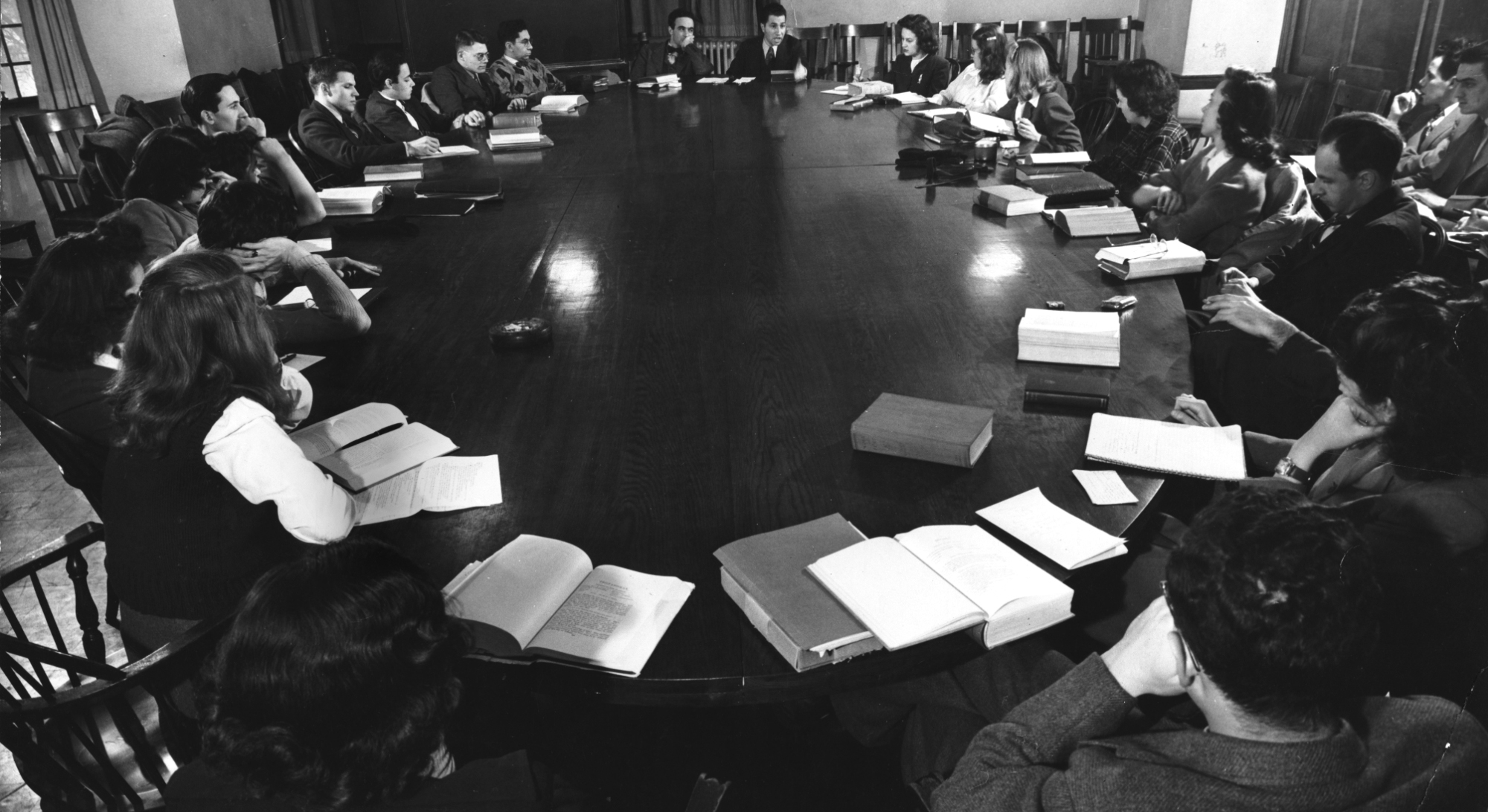
History of Ideas, Humanities 203, taught by Milton Mayer, EX'32, and great books advocate Mortimer Adler. (UChicago Photographic Archive, apf4-01957, Hanna Holborn Gray Special Collections Research Center, University of Chicago Library)
Hurry up, you’re late for class.
It sounds like an anxiety dream. You graduated—10, 20, maybe 30-plus years ago—and yet there you are, in Cobb or Kersten or a building that didn’t even exist when you were in the College, sitting in on a Core course.
The Core (the magazine) sent three alumni of different generations to see how the courses taught now compare. This is what they wrote, instead of a paper.—Carrie Golus, AB’91, AM’93
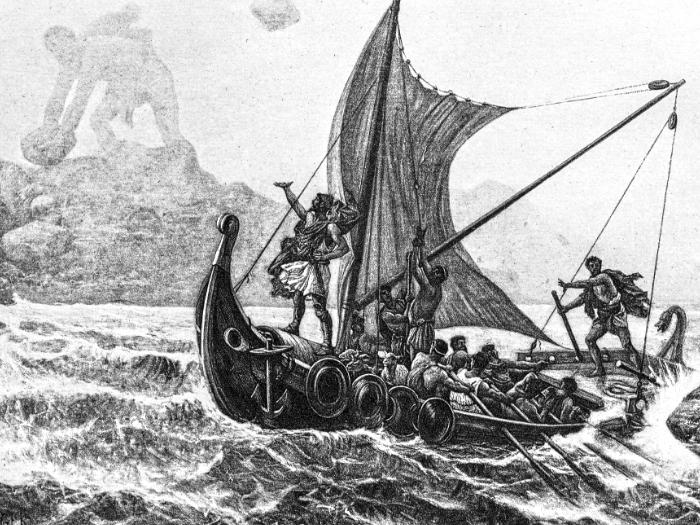
HUMA 11000
Readings in World Literature I
By Sean Carr, AB’90
I am un CHIEN—Andalusia!
Forget retinol. The easiest way to erase three-plus decades is to walk into Cobb Coffee Shop on a Tuesday in 2023 and hear the Pixies still howling from the speakers. (Millennials welcome too: the Strokes were up next on this moshing-to-the-oldies playlist.)
I’d returned to my old breakfast spot to fuel up for that morning’s real blast from the past: at 9:30 a.m. I’d be sitting in on a section of Readings in World Literature. I already knew things had changed in my old Hum sequence: “World,” for example, had been added at some point since 1986. Also, the class now had a theme—epics—and they were currently working their way through the Odyssey. The closest we’d gotten to that, in an Autumn Quarter that bounded whimsically through The Norton Anthology of English Literature, was Keats’s “Ode on a Grecian Urn.” What else will be different? I wondered as I sat eating my orange scone (in honor of my 18-year-old self, I’d hoped for Frosted S’mores Pop Tarts) and relishing the fizzy jolt of the day’s first Diet Coke. I was also eager to see how smart these Zoomer first-years really were.
When I walk into Cobb 115 a couple minutes early, Malynne Sternstein, AB’87, AM’90, PhD’96, associate professor of Slavic languages and literatures, and several students are already in heated debate. About the Philadelphia Eagles’ 20–14 loss to the lowly New York Jets two days earlier.
The Tuesday morning quarterbacking is intense when Philly native Sternstein turns to the full class, now seated around the standard rectangle of tables. “This is my segue,” she announces. “I feel shame, and I feel like the Philadelphia Eagles did something that was more than just shame themselves. They shamed the entire city.”
“Word,” a student interjects.
“They may have even shamed the game of football,” Sternstein says. “Now why do I say this? Because I want us to understand the part that shame has in this epic.”
After teeing up the topic, Sternstein offers up—and asks for—examples. Someone mentions Penelope’s locustlike suitors in Book 2.
“What is shameless about what they do?” Sternstein asks.
“I feel you could potentially connect this to not exhibiting good xenia,” the student says. (Never having read the Odyssey—my shame—I yearn for an explanation.)
“Most definitely,” Sternstein agrees. “So much of shame has to do—or is bound up—with theoxeny, or the divine law of hospitality or guest-host relations, and xenia.” (Thank you!)
She writes on the blackboard: Lack of piety = shamelessness.
“I’m not sure if this is a relevant connection,” another student says. “Even if it’s not mentioned directly in this book, hubris is a very big sin in most of Greek mythology. That usually results from people thinking that they’re godlike or thinking that they’re perfect. So they try to commit godlike actions and obviously they get struck by a lightning bolt or whatever. But shame is kind of like the barrier between mortality and godlike perfection.”
“There’s a thesis claim right there,” Sternstein enthuses. “That’s beautiful. Write that down.” (So yeah, I conclude, these kids are sharp.)
For the remaining hour of class, Sternstein is a fount of encouragement: “Excellent.” “Well done!” “Really good point, Ryan”—all the while riffing and referencing like a cross between the comic Sarah Silverman and that friend who has read more books and seen more movies (and in more languages) than anyone else in your book group or pathsofcinematicglory subreddit. (Sternstein has also taught classes on Kafka, Nabokov, and Czech New Wave films.)
She makes connections to the Epic of Gilgamesh, the first text of the quarter, and advises students to be on the lookout for similar themes (“Spoilers!”) in later entries on the syllabus, the Mahabharata and the book of Genesis.
She brings up peculiarities of pronunciation: “The c in Homeric Greek is pronounced as a ‘kuh.’ But very few people say ‘Keerkee.’ Or ‘Keeklopees.’ So don’t worry.”
She can’t resist adding, when reading of Athena spreading grace on Odysseus’s head and shoulders, “That’s where we get the shampoo brand.” (Small chortle, possibly just her own.) “I don’t know why I said that. I’m shameless.”
Sternstein digs into the nuances of the Odyssey, in English and Greek, to illustrate the trade-offs translators must consider. Unlike the other sections of the course, which are reading Emily Wilson’s 2017 translation, Sternstein has assigned the Loeb Classical Library edition. “As unpoetic as it might be,” she says, “it’s actually the most accurate that I’ve found in English.”
That said: with only a few minutes left, Sternstein realizes they’re not going to make it through the day’s reading; they still have books 10, 11, and 12 to discuss. Not a problem with a single-volume edition like Wilson’s, but the Loeb Library spreads the Odyssey across two separate hardcovers, and the second starts with Book 13. Sternstein proposes a solution that will relieve her students from having to bring both volumes on Thursday: she can record a lecture on those last three books and post it online—this gets a thumbs-up from the class—“or,” Sternstein says, “you can carry both around if you want to seem more scholarly.”
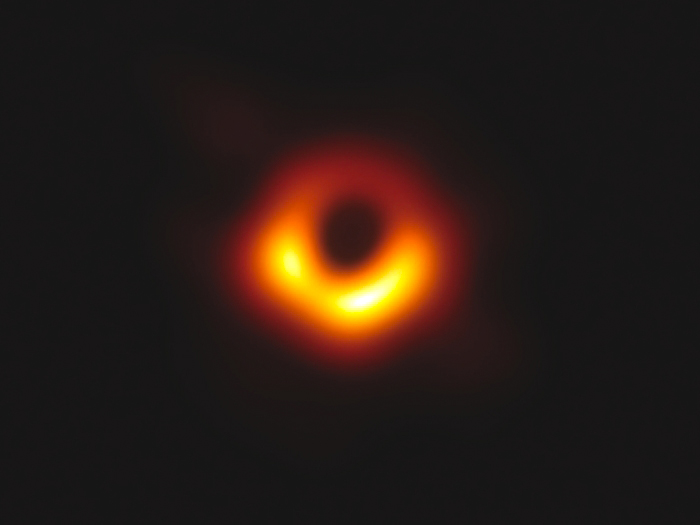
PhySci 11600
Physics for Future Presidents
By Benjamin Recchie, AB’03
Kersten Physics Teaching Center (KPTC) room 120, a severe, gray lecture hall, is packed almost to capacity on this October afternoon. I’m here for PHSC 11600: Physics for Future Presidents: Fundamental Concepts and Applications. The building is now more than twice as old as it was when I was a physics student, but it’s changed so little that, if I squint from my seat, I can imagine myself back in the late ’90s. Well, at least until a student behind me ends a story with “… that was when classes were still in-person in high school”—a reminder that this is a new and different generation, as if my graying temples and shaky understanding of internet memes weren’t reminder enough.
In the syllabus, Savan Kharel, assistant instructional professor of physics, promises that “the world of physics has the power to enrich your life in unimaginable ways. You might find yourself influencing policy on critical physics-related matters, contributing to the advancement of society and the world. … Together, we’ll explore topics that offer a glimpse into the awe-inspiring realms of the universe.”
The course covers—among other concepts—climate, the physics of hurricanes, quantum information, superconductors, biological physics, and the subject of today’s lecture, gravity. Kharel starts with a review question on a video screen: “What are unique features of gravity?”
The students offer answers: “It acts on everything in the universe.” “It’s relatively weak in ordinary situations”—as one student points out, it can be overcome by a common refrigerator magnet. As Kharel expounds upon the force’s weakness, his foot gets caught in a cable snaking along the floor. “I almost tripped while insulting gravity,” he muses.
Besides delivering karmic judgments to unwary professors, gravity also produces waves, which leads Kharel to the Laser Interferometer Gravitational-Wave Observatory (LIGO) experiment, which first detected the phenomenon in 2015. (These lucky kids, I think. When I was in the College, gravitational waves were still very much theoretical, but the students today get to learn about them like it’s no big deal.)
Next up: a brief history of the universe, starting with the big bang and the first subatomic particles and running up to the present day. When Kharel mentions the cosmic inflation that brought the universe to its current size, one student raises her hand. “What causes inflation in the early universe? And how far would it go?”
Kharel demurs, saying that one would need a decade of education to be able to really understand it. But he briefly discusses how inflation is tied to the current theory of dark energy, the mysterious form of energy that seems to make up most of the universe yet can’t be directly observed. “If you figure it out, please let me know,” he concludes.
The course is designed with minimal math to help non–physics majors gain a conceptual grasp of science. “This is essential, as many may find themselves making science-related decisions without being experts,” he tells me later. During Winter Quarter, United States Rep. Sean Casten (D-IL) and Rep. Bill Foster (D-IL)—a physicist who worked at Fermilab for more than 25 years before entering politics—have been invited to speak with the class.
Today in KPTC 120, Kharel moves on to black holes and singularities. Another pang of jealousy: on the screen is a picture of the black hole at the center of our galaxy taken by the Event Horizon Telescope. (Back in my day, I grouse to myself, we didn’t get to see actual black holes—we had to make do with a black circle on a piece of paper, and just imagine it was the collapsed heart of a giant star.)
On the video screen Kharel posts four statements about black holes and asks which one is false. “Let’s vote,” he says. “Talk to each other, convince each other.” The students discuss for a minute. Then they each hold up a sheet of paper printed with the letters A, B, C, and D. It’s an interactive teaching method Kharel uses to gauge how well they’re following the lecture.
Most have folded their sheets to show the letter C, to indicate the third statement, “Black holes are the brightest objects in the universe,” is false. They’re correct: you might see the material around a black hole, but not the object itself, since light can’t escape.
“So when you become president, you’ll fund all these scientists except this one,” Kharel says, pointing to statement C—meaning a hypothetical clueless scientist whose research depends on a false statement, and who clearly doesn’t know the first thing about black holes.
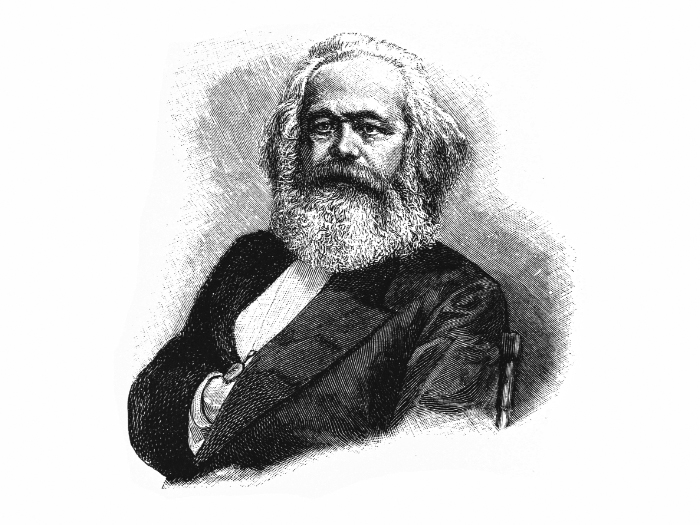
SOSC 12400
Self, Culture, and Society I
By Elly Fishman, LAB’06, AB’10
“What is a fetish?” Anirban Karak, collegiate assistant professor, asks the 18 students in the class Self, Culture, and Society I.
Many answers could suffice in a broader conversation; in the context of Karl Marx, however, only one does.
After a long pause, which Karak endures gracefully, a student raises his hand.
“It’s the conflict between use value and value in any one commodity,” he says. “And how it appears as the external opposition between itself and money, but it’s actually internal opposition.”
“Exactly,” says Karak. Fetishism is the value we assign to objects, which, in a capitalist society, is often expressed through the number on a price tag.
It’s a bright afternoon in early November. The class meets in a sun-drenched classroom in the Campus North Residential Commons, a concrete contemporary structure on 55th Street; as well as a dining hall, Campus North has two classrooms on its first floor.
This is Karak’s first quarter at the University. A Harper-Schmidt Fellow with a PhD from New York University, he studies the history of capitalism. Among his published papers, two involve discussion of Marxian political frameworks: “Economic Theory Without Historicity” (Critical Historical Studies, 2021) and “Accumulation by Dispossession” (Review of Radical Political Economics, 2016), a Marxist history of the English Premier League.
Karak’s own copy of The Marx-Engels Reader (W. W. Norton, 1978), with its selections from Karl Marx’s Capital (Otto Meissner, 1867), sits open on the table, its pages decorated with sticky notes, bookmarks, and scribbled marginalia. He has two Capital chapters—“Chapter I. Commodities” and “Chapter IV. The General Formula for Capital”—to cover in an 80-minute class.
A little over a month into the first quarter, today’s class remains an exercise in basic Marxian definitions. Use value: Usefulness of a commodity—as opposed to its exchange value. Labor power: Workers’ capacity to do work. Surplus value: Value created by workers that generates a profit for the capitalist.
If this group of students is anything like my own classmates, eventually these same terms will serve as the basis of heated late-night arguments. (One common exchange in my College living room was whether our friend group could truly live collectively and communally within a capitalist society.) The phrases might also lend themselves to notable fashion choices like my former roommate’s, whose beloved baseball cap read “Necessary Labor Time” across the front. And if these students are anything like me—I took this same SOSC sequence in 2007—they will carry these first lessons with them for years to come. But for now, they must simply keep up with Karak, who is blazing through the dense material.
About halfway through the class, the discussion shifts to the working day. There are two parts, says Karak, before asking the class to define them. The students respond almost in unison: necessary labor and surplus labor.
“So what is the necessary labor time?” Karak asks.
One student jumps in: “The time needed to produce the value that keeps you alive until the next day.”
Karak nods. Surplus labor, another student adds, is everything else. It’s how the capitalist makes a profit. Karak wants to linger on the first term. Dig a little deeper. What is necessary for us—in 2023—to live a decent life?
One student says technology. A couple of others suggest medicine, antibiotics.
“Needs change with time,” Karak says.
The sun shifts as afternoon gives way to evening. Karak lands on the last of several slides, each of which outline chapter discussion points. As the sound of backpack zippers duets with shutting laptops, Karak reiterates a refrain he hopes lands with the class: “You can think about these things for yourself. It’s not just what Marx says.”
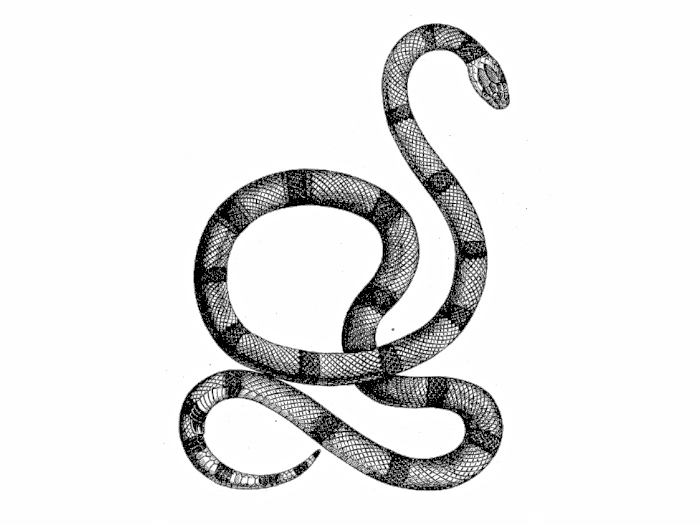
The Core’s Metcalf intern, Isabella Romeu, Class of 2026, has completed seven Core courses: Language and the Human (Humanities); Mind (Social Sciences); Elementary Statistics (Mathematical Sciences); Principles of Biology (Biological Sciences); Natural History of North American Deserts (Biological Sciences); Intro to Genres: The Immigrant Experience Through Literature (Arts); and Language, History, and Culture for Heritage Speakers–I (Language–Spanish). Asked about the most memorable lessons she’s learned so far, she came up with this list.—Carrie Golus, AB’91, AM’93
What I’ve learned in the Core so far
By Isabella Romeu, Class of 2026
- Don’t hedge in essays.
- On second thought, it’s okay to hedge.
- Mitochondria are the powerhouse of the cell.
- The legion of iPad kids will side-eye you if you dare take notes with a real pen.
- Don’t argue with those who play devil’s advocate. You will have to accept defeat, but only because they can’t.
- Beatrice Fineschi, PhD’98, and Eric Larsen are the best Core biology professors. Professor Fineschi, in her Principles of Biology course, kept the content as simple and straightforward as possible. And Professor Larsen’s jokes kept me both engaged and entertained during Natural History of North American Deserts lectures.
- It doesn’t hurt to try. But it does hurt to not try.
- Don’t take HUM and SOSC requirements during the same quarter.
- Sixty-eight percent of data will fall within one standard deviation of the mean.
- For those who like to wear long nails, don’t let your professor question your ability to type with them.
- Use MLA [Modern Language Association] format for citing sources in your papers unless told otherwise.
- Be comfortable in confronting the uncomfortable.
- H. G. Carrillo lied about being Cuban.
- ChatGPT can’t do the thinking for you.
- When traversing through the Sonoran Desert, remember this phrase if you ever encounter a tricolored snake: “Red touches yellow / Kills a fellow (venomous); / Red touches black / Friend of Jack (harmless).”
- Shakespeare and Homer are overrated.
- Write in active voice.
- If you need a calculus sequence for your major, take 130s.
- Make sure to attend every HUM writing seminar. You will become a better reader, writer, and arguer.
- In CIV, HUM, and SOSC discussions, you will often witness heated arguments. Usually, the loser is the first to raise their voice.
